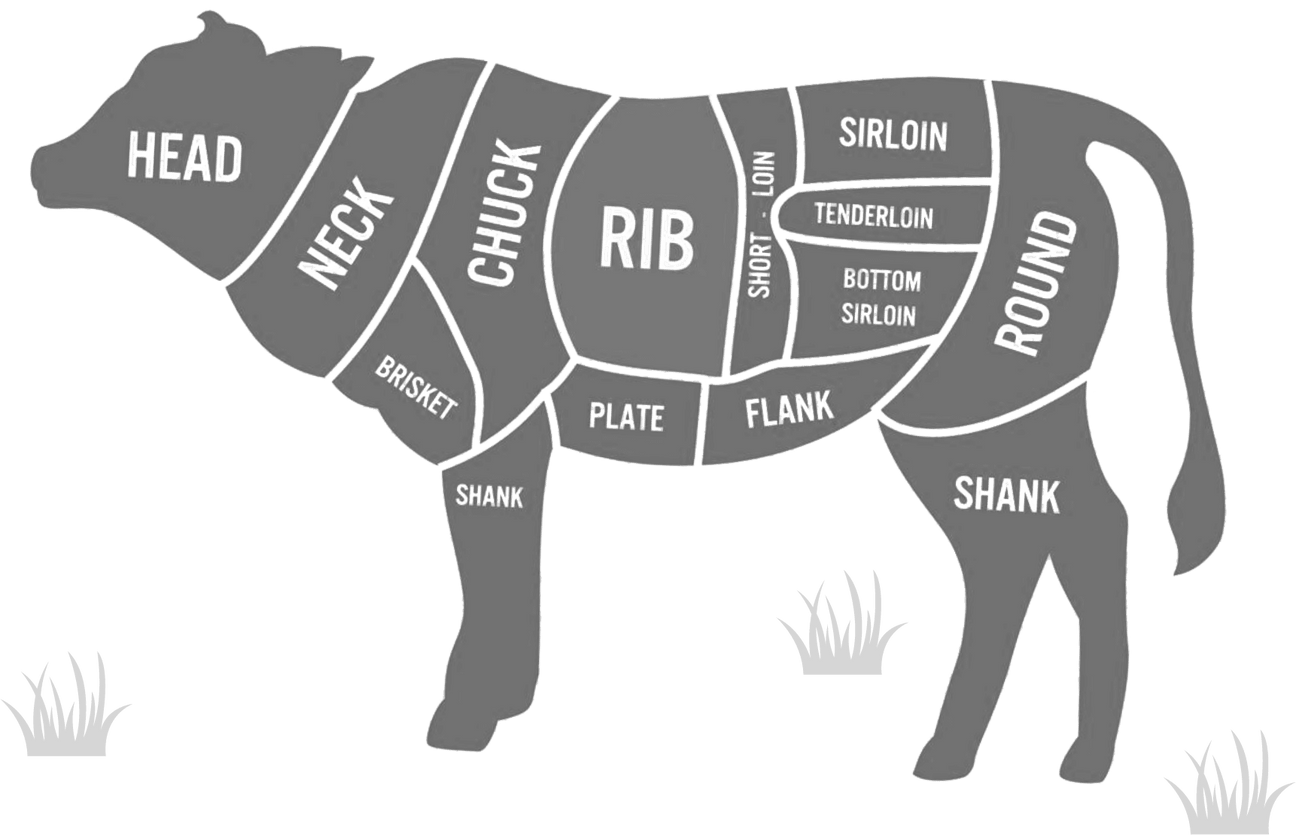STORING & COOKING BEEF
Braising: chuck, brisket, short ribs, flank steak, skirt steak, and round
Stewing: chuck roast, chuck shoulder, short ribs, round roast, cross-cut shank
BBQ/Smoking: brisket, shoulder, short ribs, ribeye, prime rib, whole rump
Grilling: sirloin steak, ribeye steak, tenderloin steak, rump, porterhouse, T-bone, prime rib, hangar steak, flank steak, skirt steak
Pan Fry/Stir Fry: fillet, flank steak, skirt steak, rump, tenderloin, T-bone, sirloin, ribeye
Pan Searing: skirt steak, hangar steak, T-bone, prime rib, flank steak, porterhouse, rump, tenderloin steak, sirloin steak, ribeye steak
Roasting: rump, prime rib, sirloin roast, ribeye roast, whole tenderloin roast, chuck roll
CATTLE OPERATION
Choosing grass-fed or grain-fed beef comes down to personal preference for taste and ideals.
Grass-fed cattle are eating a diet lower in calories and energy meaning it takes longer for them to reach the proper weight. Feeding cattle on a pasture also takes up more space and this extra time means a premium price. Due to their diet, grass-fed beef tends to be leaner with less marbling and fat.
Grain-fed cattle reach their ideal weight quicker, which is more efficient, less expensive, and better for the environment. Our grain-fed beef also has more marbling with means a more tender and flavorful cut of meat.
